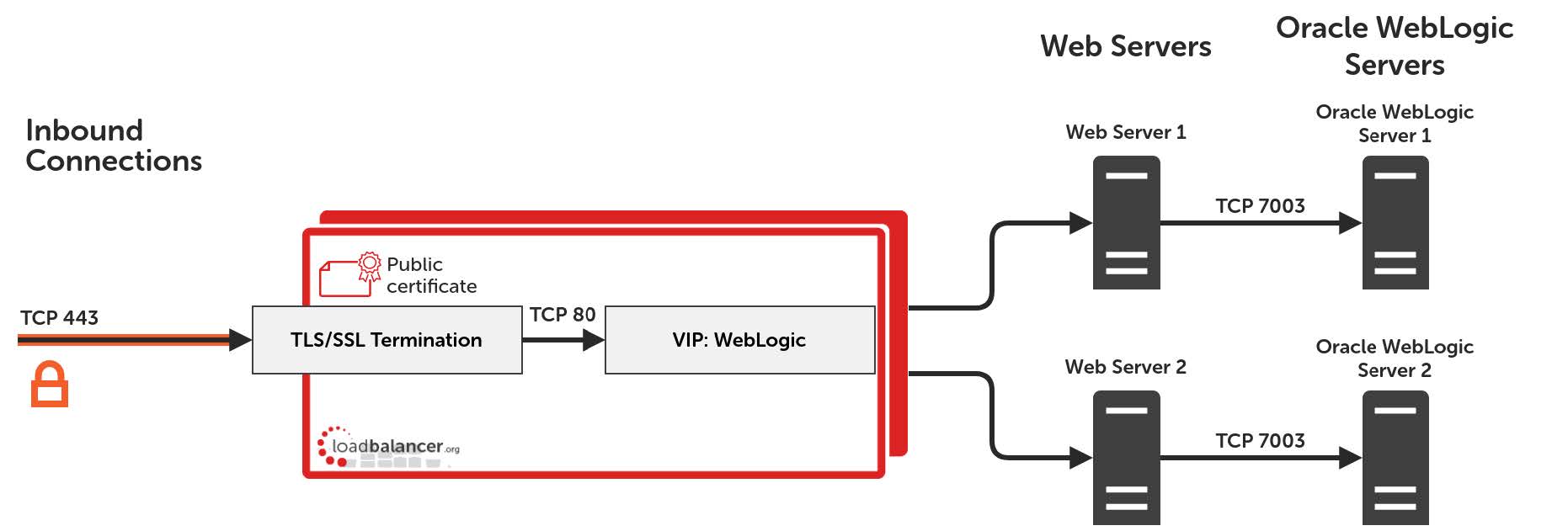About Oracle WebLogic Server
Oracle WebLogic Server is an application server designed for developing and deploying and running enterprise applications, such as Java Enterprise Edition (EE) and Jakarta EE applications. While it can be used as a web server in its own right, it is better suited for hosting dynamic applications. This generally means it will sit behind another web server, e.g. OHS, Apache, Nginx, or IIS.
Key benefits of load balancing
As IT specialists, Loadbalancer.org understands that these environments can be complex with multiple technologies and applications.
Load balancing Oracle WebLogic Server creates systems that are:
- reliable and highly available
- scalable
- high-performing
Loadbalancer.org specializes in providing application delivery controllers (ADC) and load balancing solutions. For more information about our deployment summary is below.
How to load balance Oracle WebLogic Server
A load balanced, highly available Oracle WebLogic Server environment highly recommends that you have a working Oracle WebLogic Server environment first before implementing the load balancer. To provide load balancing and HA for Oracle WebLogic Server, a single VIP (Virtual IP address) is required:
- HTTP
In addition, a TLS/SSL termination service is required to allow clients to connect using HTTPS. TLS/SSL connections must be terminated by the load balancer. This allows HTTP header manipulation to take place, which is required in order for Oracle WebLogic Server to be correctly load balanced. Instructions on how to configure a TLS/SSL termination service are in the ‘Appliance Configuration’ section of our Deployment Guide which is linked below.

For more information and guidance on how to load balance Oracle WebLogic Server take a look at our deployment summary below.
















